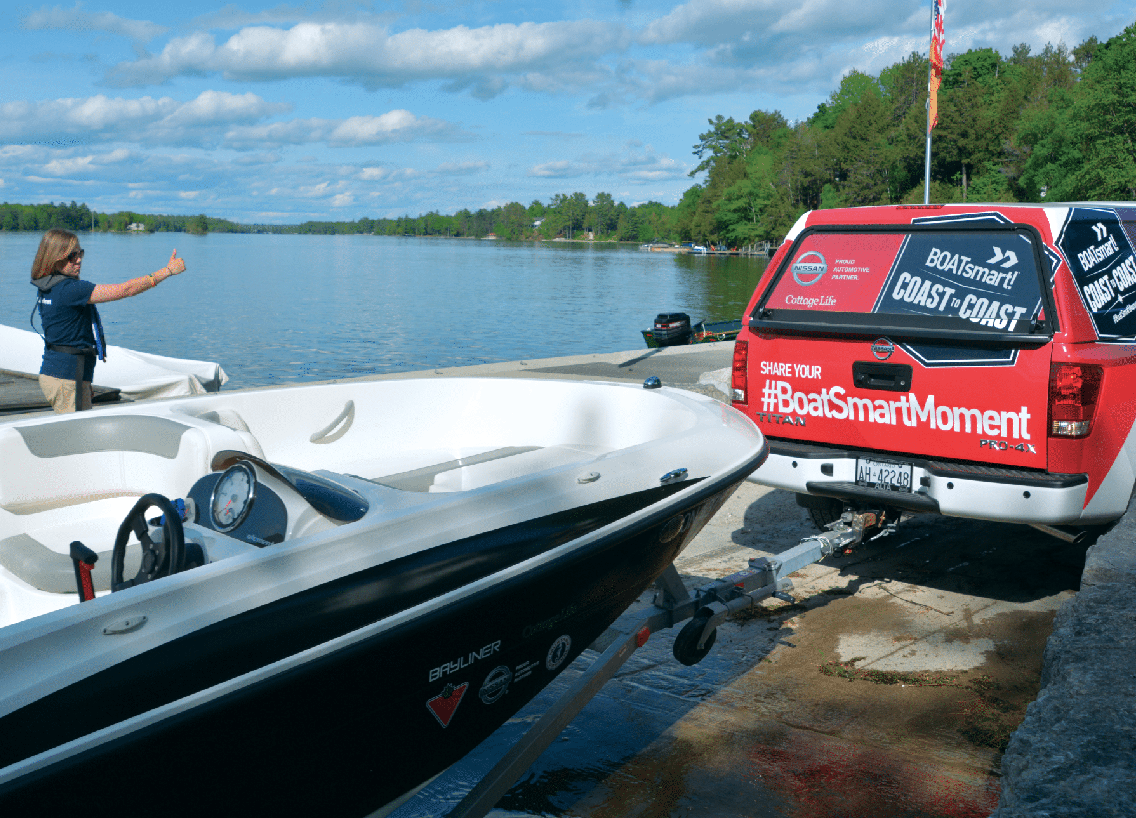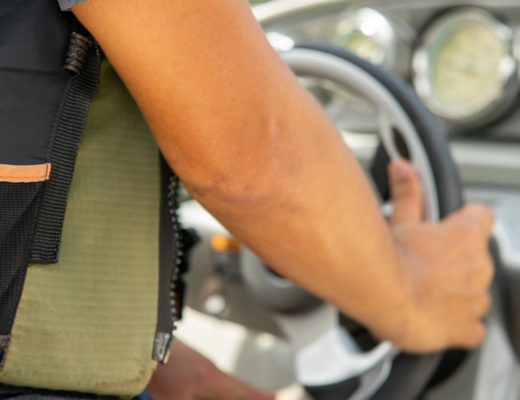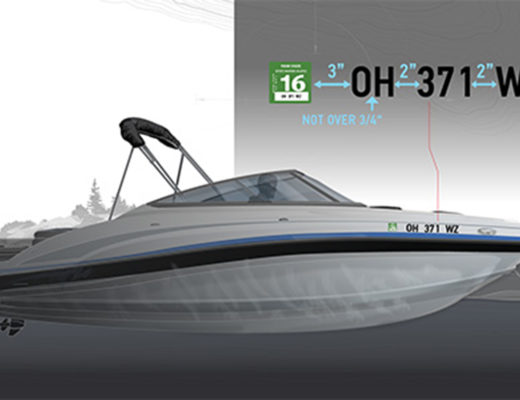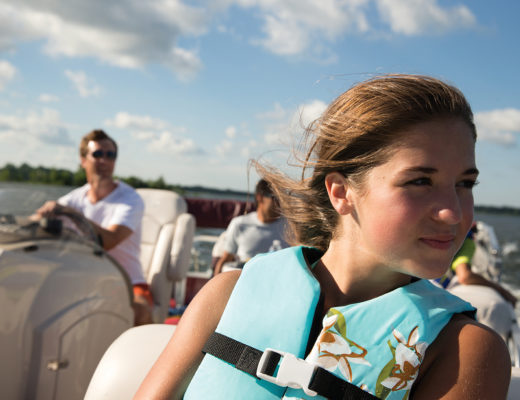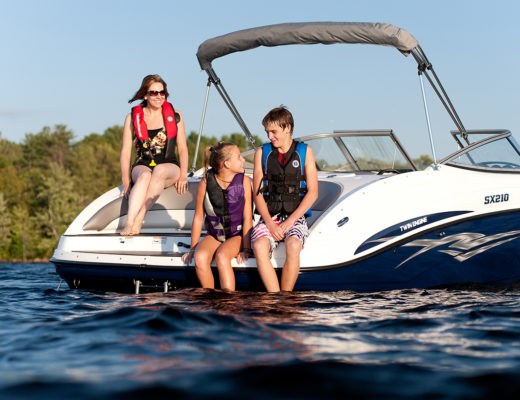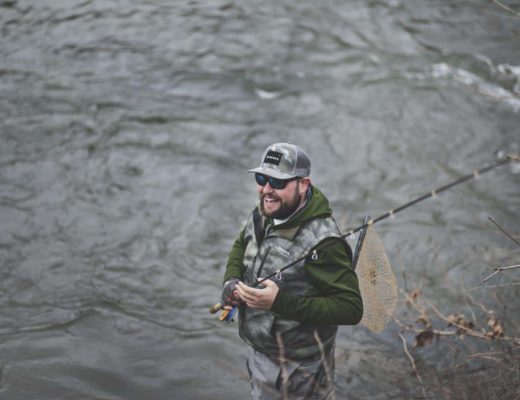To legally drive a car in Canada, you must fully understand and respond to a variety of road signage. The same principle applies to driving a boat in Canadian waters.
There are many boating restrictions and advisory indicators that inform boat operators about the speed they are allowed go, the hazards in the area, and other activities taking place in the water that require the operator to avoid or take extra caution.
What are the important boating restrictions and signs boaters should know? Keep reading to find out about these crucial resources to help you stay safe on the water.
What Do Signs for Boating Restrictions Look Like?
Restriction signs are framed in orange, with the symbol on the sign indicating the type of restriction that applies. Some details to note include:
- Arrow Shapes: the restriction applies in the direction pointed by the arrow
- Green Border: a special condition applies to this restriction.
Boat operators must also be able to identify and understand the variety of special buoys and flags in the water, as they provide essential information about boating hazards. These markers may be equipped with lights for night visibility, have flashing yellow lights, or have letters or numbers on them for marine chart identification.
What Are Some of the Most Common Signs?
Below is a list of signage for boating restrictions to familiarize yourself with before you start your engines! These signs are some of the most common ones you’ll see on the water.
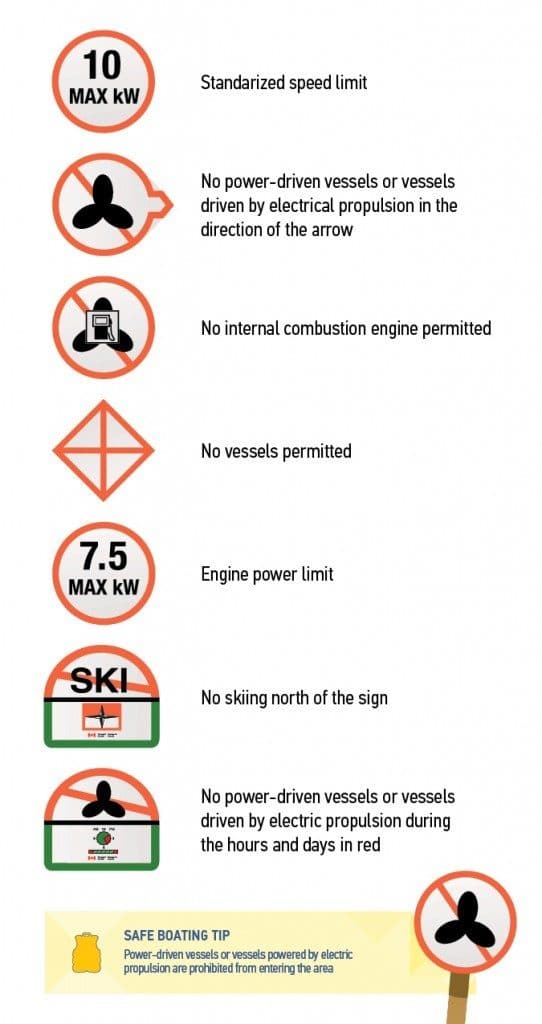
What About Buoys?
Buoys are not just floating obstacles to avoid with your boat. They also offer helpful information to help boaters stay safe on the water.
- Diving buoy: This buoy is white in colour, with a red flag and diagonal white stripe. It marks an area where scuba diving and related activities are taking place.
- Swimming buoy: this white buoy marks the area where swimming is taking place.
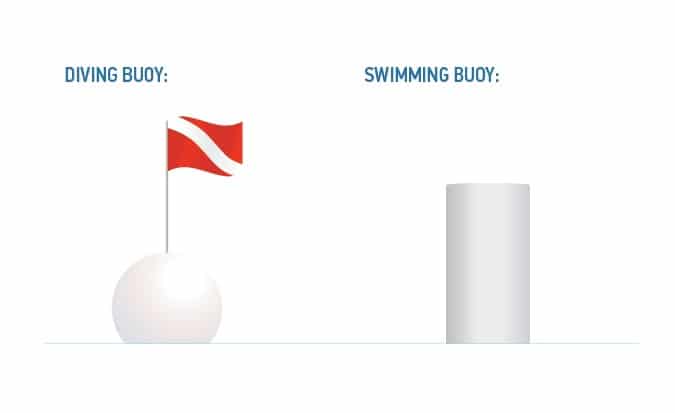
- Keep Out Buoy: This white buoy, with an orange diamond icon and lines through it, marks waters in which boating is not permitted.
- Control Buoy: this white buoy with an orange circular icon marks an area where boating is restricted. The type of restriction in place will be clearly labeled in black text.
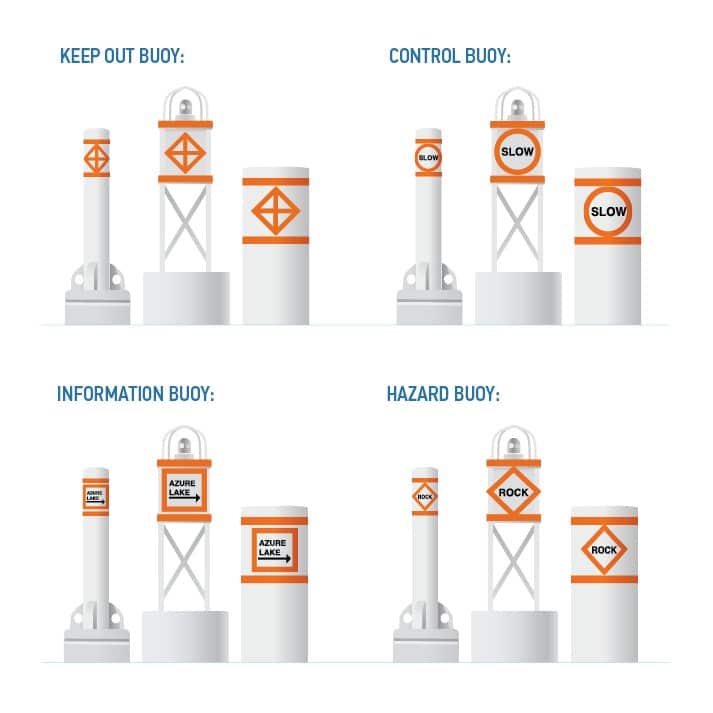
- Information Buoy: This white buoy with an orange square icon provides information of interest to boaters using clearly marked words or symbols.
- Hazard Buoy: This white buoy, with an orange icon and two horizontal bands, marks hazards such as rocks or shoals, which will be labeled on the buoy.
- Cautionary Buoy: This yellow buoy marked dangers such as underwater structures and areas where a safe channel may not exist or may mark traffic separations. Cautionary buoys will display ID letters and may carry a top mark in a single yellow
- Anchorage Buoy: This yellow buoy marked with an anchor symbol indicates where it is safe to anchor your boat.
- Mooring Buoy: This white and orange circular buoy is the only aid to navigation that you can legally secure your boat to.
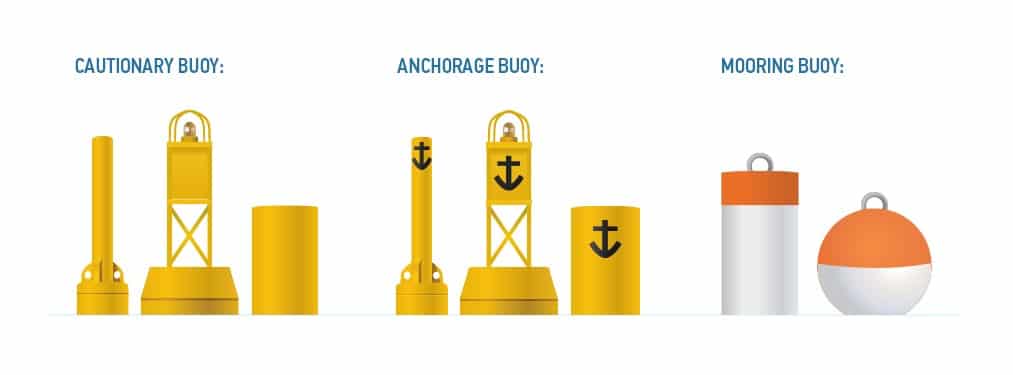
Boating signage and buoys are labeled clearly and typically easy to understand, but you should thoroughly familiarize yourself with these signs before you hit the water.
Learn More About Navigating the Waters with a Boater Course
Knowing what buoys and boater restriction signs mean helps you stay safe – and keep other boaters safe – on the water every season. However, signs and buoys are only part of knowing how to stay safe when operating a boat.
We compared boating to driving at the start of this blog, and just like you need a license to drive . . . you need a license to boat! To get your license, you need to take a boater course and pass the exam. BOATsmart! makes it easy to do both!
You can take our online course and purchase your PCOC (Pleasure Craft Operator Cards) through our website. This convenience means there’s no need to skip the education you need that can help save lives on the water.
Start here to learn more about the signs and buoys we mentioned today, plus the other safety essentials required for legal boating in Canada!
Originally published September 29, 2017. Content most recently reviewed and updated July 26, 2024.
